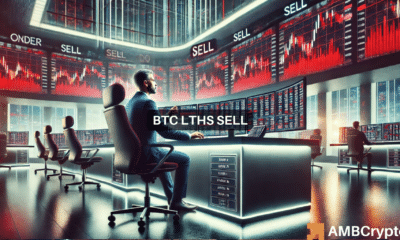Ethereum: Shifting tides in DEX dominance and the rise of Layer-2 solutions

- Ethereum’s grip on DEX dominance is slipping, signaling a new era in decentralized trading.
- However, Ethereum’s innovative Layer 2 solutions are recapturing lost traffic and solidifying its position as a dominant platform.
Ethereum emerged as a second-generation blockchain, revolutionizing the digital landscape by introducing smart contract functionality.
It ingeniously filled a void left by the Bitcoin network, which lacked this essential feature. Among its notable achievements, Ethereum solidified its position as the epicenter of Decentralized Exchanges (DEX).
However, Ethereum’s stronghold on the DEX throne is gradually slipping away, giving rise to a new era in decentralized trading.
Read Ethereum (ETH) Price Prediction 2023-24
Is Ethereum lagging in DEX dominance?
Ethereum has long reigned supreme as the go-to network for Decentralized Applications (Dapps) and Decentralized Exchanges (DEX), with most smart contract platforms operating on its blockchain.
However, recent data from Messari suggested that Ethereum’s grip on DEX dominance was waning. This shift can be attributed to two factors.
Firstly, the decreasing dominance in DEX volumes could be attributed to the emergence of alternative Layer-1 (L1) DeFi ecosystems. Also, the strong bull market throughout 2021.
However, when market downturns hit in 2022, many large entities were wiped out. It also caused trading volumes to shift back to the mainnet.
Furthermore, this trend culminated in March 2023, during the USDC depeg. During this time its DEX volume dominance reached an impressive 80% – a level not seen since the beginning of 2021.
Secondly, users who migrate from the Ethereum mainnet to L2 DEXs are less likely to revert to their previous course. L2s inherit their security properties and base assets (ETH) from Ethereum.
Ethereum L2s
In order to improve scalability and increase transaction throughput, ETH Layer 2 solutions have emerged as a potential solution. They exist to address the limitations of existing blockchain networks. These solutions are built on top of layer 1 networks to enhance performance.
One popular example of a Layer 2 solution on Ethereum is Polygon, which utilizes a side-chain approach. Another type of Layer 2 solution is rollups, which can be either Zero Knowledge (ZK) based, such as zkSync, or Optimistic Rollup, like Optimism.
These solutions allow for a higher volume of transactions to be processed while maintaining security and integrity.
Total Value Locked of mainnet and L2s
According to data from L2 Beat, Ethereum rollups have been experiencing a notable upward trend in Total Value Locked (TVL). As of this writing, the TVL had surpassed the $9 billion mark, with Arbitrum and Optimism taking the lead in TVL. These leading Layer 2 (L2) solutions are categorized as Optimistic Rollups.
Furthermore, data from DefiLlama revealed that the TVL of Ethereum stood at an impressive $28.73 billion, at the time of writing. This represented over half of the total TVL in the market, which amounted to $49.09 billion.
How much are 1,10,100 ETHs worth today?
Although Ethereum’s DEX dominance may be diminishing, its Layer 2 (L2) solutions successfully recaptured the traffic it was losing.
While attention may have shifted away from the mainnet, it remains a dominant platform thanks to the adoption of side chains and rollups.
The platform’s innovative approach to scaling through side chains and rollups has allowed it to maintain prominence.







